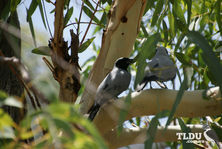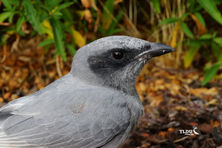
Shoppers Feedback:
Jan 17, 2017
Hello Ros,
I have now paid the invoice, but I would like to write to you just to say a big THANK YOU for getting me the Penguin!
The ChatterMate Penguin became a nice memory for me when I was in New Zealand, and I am so greatful to you for arranging so that I could have it! :-)
Thank you so much!!!!!!!!!!!
Regards,
Malin
Hi Ros,
Many thanks for your very kind email. I really appreciate your prompt reply!
I appreciate your advice regarding the decorations and customs. These are a gift for my daughter’s exchange student family so when she returns home on the weekend I will show her and see if she loves them as much as I do!
Thanks so very much again - I am truly grateful for your kind assistance.
Kind Regards
Bernadette
Ros,
Thanks again for the great customer service. It's a refreshing change!
Best regards,
Trevor
Hey Roz,
Thank you for your emails. Just loved my first order. The cute little Aussie bush critters are going to be used for an office Christmas decoration. My colleagues also liked them and talked about making an order to your site. I'll send you a photo when completed.
I'll be ordering more to send to my daughter's host family in America.
Fabulous service from you.
Kind regards,
Michelle
Thankyou. Order arrived today. One very happy grandson with his new beastly binoculars.
Regards,
Irene
- Home
- Wild Wonders
- Shop
- Aromas of Australia
- Australian Made
- Books
- Book Marks
- Christmas Decoration Sale
- Christmas Decorations
- Clocks
- Drink Holders
- Garden & Outdoor
- Gift Wrapping & Cards
- Home & Giftware
- Jewellery
- Keyrings
- New Products
- Pencils & Pen Holders
- Photo Frames
- Plush Toys
- Plush with Sound
- Sheepskin Rugs
- Stationery
- Stone Carvings
- Toys & Games
- Travel Goods
- Wedding
- Wild Figurines
- Wildlife Safety Products
- Wind Chimes
- Wine Charms
- View All Products
- Wildlife
- Australiana
- Explore
- Contact Us
Black Faced Cuckoo Shrike

Quick Facts
| Length: | 33 cm |
| Height: | - |
| Weight: | 112 grams |
| Colour: | Black face and throat. Blue-grey back, wings and tail with white underparts |
| Habitat: | Found is almost any wooded area wtih exception of rainforests. Can be found in many urban areas |
| Food: | Insects and other invertebrates. Some fruits and seeds are also eaten |
| Predators: | - |
| Status: | Secure in all states and territories in Australia |
Black-faced Cuckoo-shrikes have a black face and throat, blue-grey back, wings and tail, and white underparts. They are slender, attractive birds. They have a curious habit of shuffling their wings upon landing, a practice that gave rise to the name "Shufflewing", which is often used for this species. This shuffling is also carried out by most other species in this family. Young birds resemble the adults, except the black facial mask is reduced to an eye stripe.
Cuckoo-shrikes are neither cuckoos nor shrikes, but are so called becaues their feathers have similar patterns to those of cuckoos and their beak shape resembles that of shrikes.
Young Black-faced Cuckoo-shrikes may be confused with the White-bellied Cuckoo-shrike, which also has a black eye stripe. However, this species is much smaller (26 - 28 cm).
The Black-faced Cuckoo-shrike is widespread and common. Outside the breeding season, large family groups and flocks of up to a hundred birds form.
The Black-faced Cuckoo-shrike is found in almost any wooded habitat, with the exception of rainforests. It is also familiar in many suburbs, where birds are often seen perched on overhead wires or television aerials.
Partially nomadic; some northwards migrations.
Black-faced Cuckoo-shrikes feed on insects and other invertebrates. These may be caught in the air, taken from foliage or caught on the ground. In addition to insects, some fruits and seeds are also eaten.
Black-faced Cuckoo-shrikes may mate with the same partner each year, and may use the same territories year after year. The nest is remarkably small for the size of the bird. It is a shallow saucer of sticks and bark, bound together with cobwebs. Both partners construct the nest and care for the young birds.
Last Updated: Wednesday 17th July, 2013
BUSH e-TELEGRAPH
Signup for our monthly newsletter the "e-Telegraph"
Quick Links
Home | The Beginning | About The Land Down Under | Wild Wonders | Advertise on Wild Wonders | Christmas Decoration Sale | Christmas Tree Decorations | Drink Holders | Plush with Sound | Stone Carvings | Wildlife Wine Charms | Freebies | Australian Wildlife | Help Our Wildlife | Australiana | Photo of the Month | Explore The Land Down Under | Contact Us | Legal Notices


